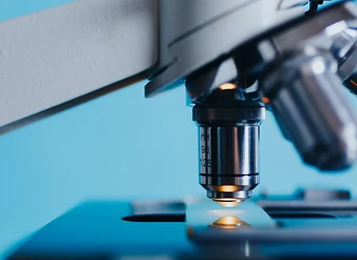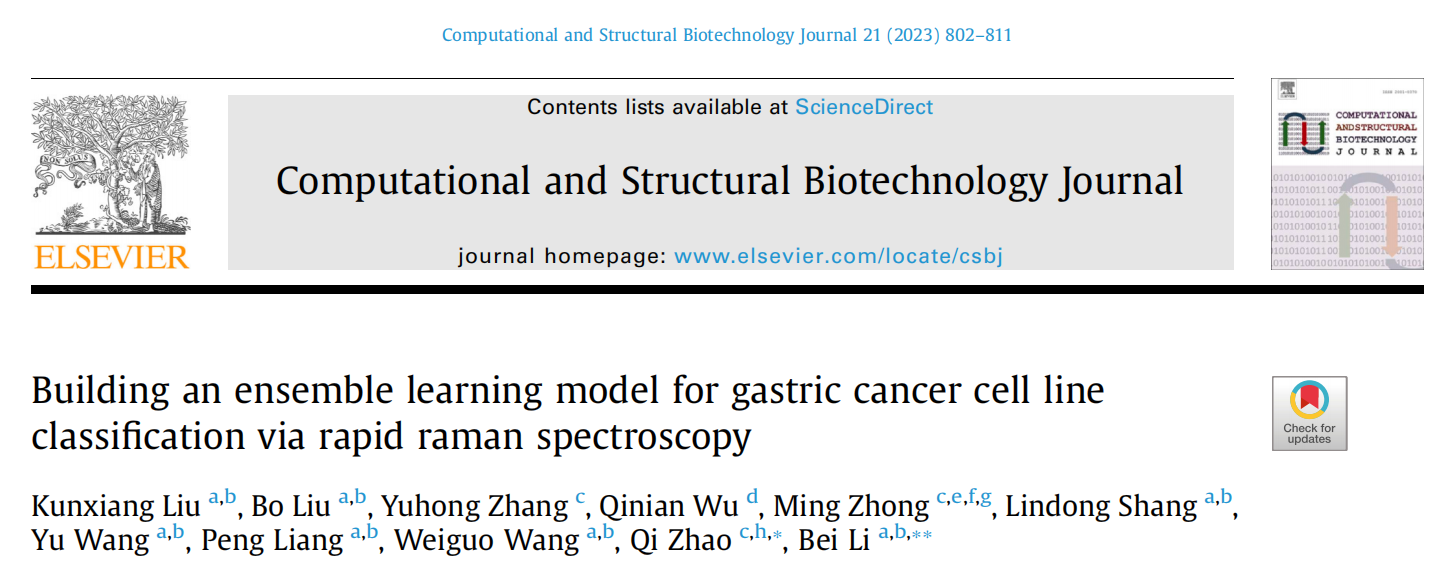

- Application Article
- Download
Hooke College

- About Us
- Team
- R & D and production
- Join Us
- Contact Us
- Qualification honor



In December 2022, the research team led by Li Bei from Changchun Institute of Optics and Mechanics, Chinese Academy of Sciences, and the team led by Zhao Qi from the Cancer Prevention and Treatment Center of Sun Yat sen University, applied the core product of HOOKE PRECI SCS-R300, and published a paper titled "Building an ensemble learning model for gastric cancer cell line classification via rapid Raman spectroscopy" in the journal "Computational and Structural Biotechnology Journal". This study utilized spectral data such as full spectrum, fingerprint region, high wavenumber region, and Raman background from Raman spectroscopy to construct five spectral datasets. A stacking ensemble learning model, SL Raman, was constructed for different datasets, and gastric cancer cell line identification was achieved.

Cell misuse and cross-contamination can affect the accuracy of cell research results and result in wasted time, manpower and material resources. Thus, cell line identification is important and necessary. At present, the commonly used cell line identification methods need cell staining and culturing. There is therefore a need to develop a new method for the rapid and automated identification of cell lines. Raman spectroscopy has become one of the emerging techniques in the field of microbial identification, with the advantages of being rapid and noninvasive and providing molecular information for biological samples, which is beneficial in the identification of cell lines. In this study, we built a library of Raman spectra for gastric mucosal epithelial cell lines GES-1 and gastric cancer cell lines, such as AGS, BGC-823, HGC-27, MKN-45, MKN-74 and SNU-16. Five spectral datasets were constructed using spectral data and included the full spectrum, fingerprint region, high-wavelength number region and Raman background of Raman spectra. A stacking ensemble learning model, SL-Raman, was built for different datasets, and gastric cancer cell identification was achieved. For the gastric cancer cells we studied, the differentiation accuracy of SL-Raman was 100% for one of the gastric cancer cells and 100% for six of the gastric cancer cells. Additionally, the separation accuracy for two gastric cancer cells with different degrees of differentiation was 100%. These results demonstrate that Raman spectroscopy combined with SL-Raman may be a new method for the rapid and accurate identification of gastric cancer. In addition, the accuracy of 94.38% for classifying Raman spectral background data using machine learning demonstrates that the Raman spectral background contains some useful spectral features. These data have been overlooked in previous studies.
The paper links:
https://doi.org/10.1016/j.csbj.2022.12.050

+86-431-81077008
+86-571-86972756

Building 3, Photoelectric Information Industrial Park, No.7691 Ziyou Road, Changchun, Jilin, P.R.C
F2006, 2nd Floor,South Building, No. 368 Liuhe Road, Binjiang District, Hangzhou, Zhejiang,P.R.C

sales@hooke-instruments.com

COPYRIGHT©2022 HOOKE INSTRUMENTS LTD.ALL RIGHTS RESERVED 吉ICP备18001354号-1